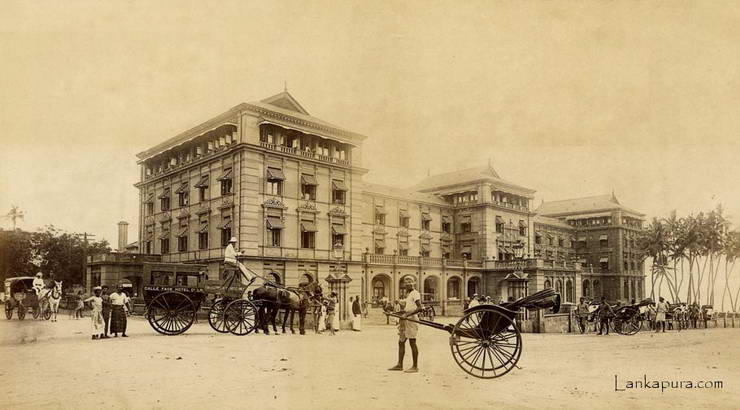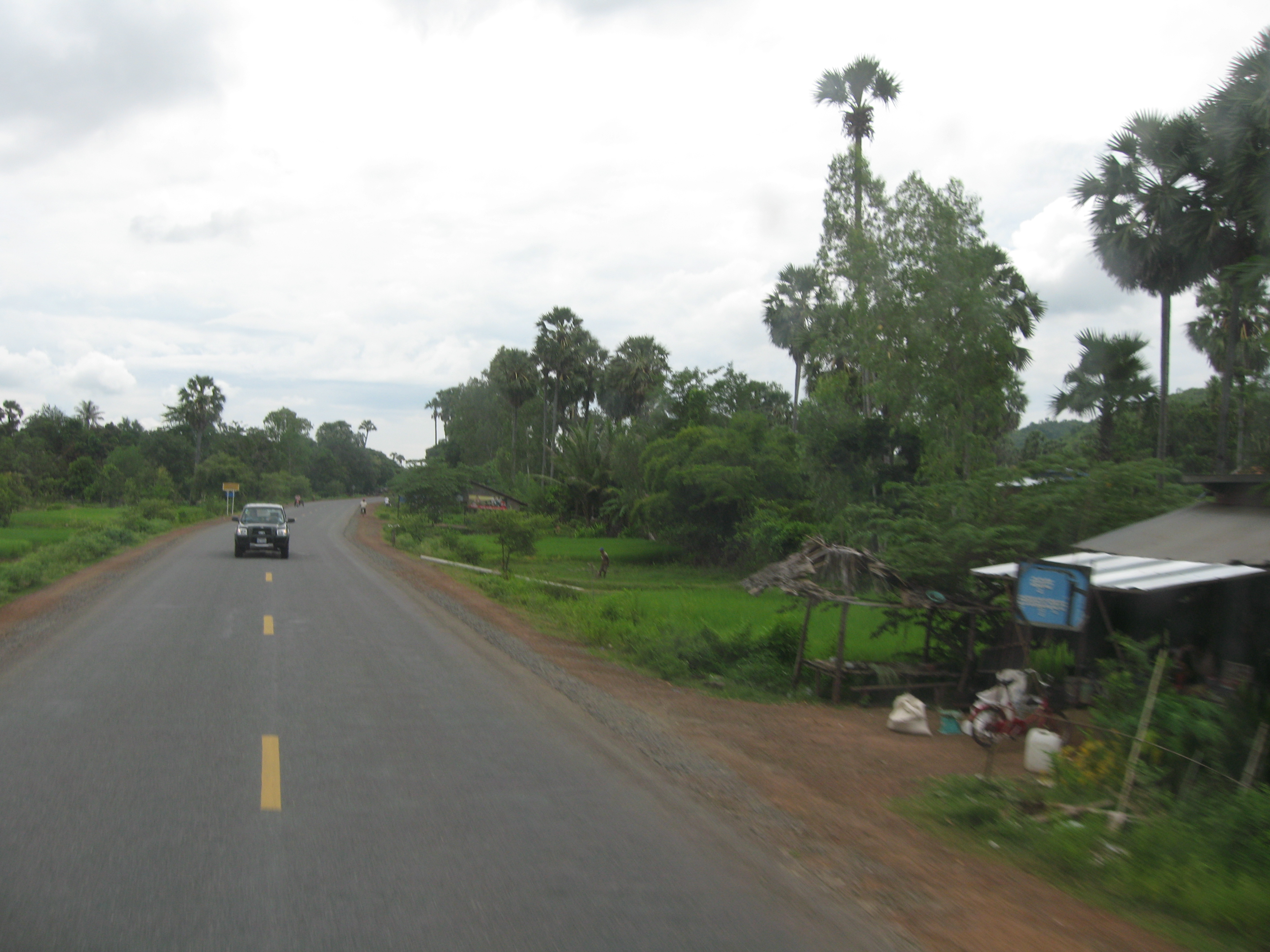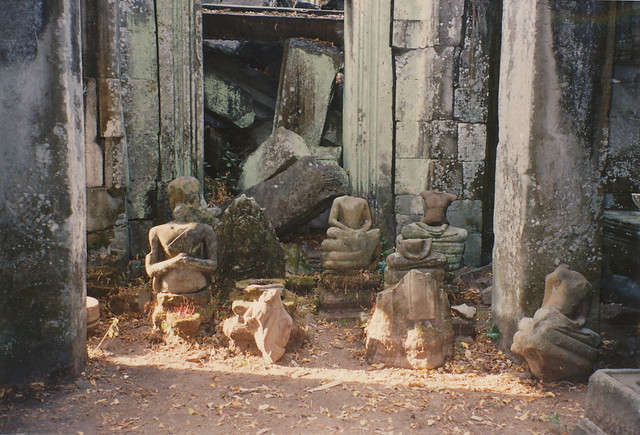Truth is...Fuad & I want to start a family so we decided to take a trip that would tide us over until we're ready to travel with kids in tow... In preparing for my April break we compiled a list of dream places and we really took our time before narrowing it down...Cambodia & Sri Lanka won. It doesn't seem practical, does it, to travel to not one, but two countries in different directions from our home in a 2 week time span? We wanted this to be BIG since we may not be taking another trip for awhile (besides our trip home to the States this summer) and one of the reasons we decided to move over here was so we could explore this part of the world.
Once we decided on the locations, Fuad did all of the work. He did the research and found us the coolest places to stay, he booked all the flights, he arranged all of the rides, he pre-ordered our visas. All I had to do was spend a few hours at the Thai Immigration office getting my multi-entry visa and then show up. I'm one lucky lady!
Perhaps some more detail will put this trip in perspective. Here is our insane itinerary:
Flight-Chiang Mai to Bangkok (1 hour)
2 days in Bangkok (hotel) I sightsee, Fuad works
Flight-Bangkok to Siem Reap (45 minutes-FREE for both of us by using air miles)
3 nights hotel, MASSIVE sightseeing around Angkor Wat
Drive (5 hours) from Siem Reap to Phnom Penh (I now know more about Mr. Ly, our driver than I do about people in Thailand I've been working with everyday for 9 months!)
Flight-Phnom Penh to Bangkok (1 hour)
1 night airport hotel (wake up call 3:30 am!)
Flight-Bangkok to Colombo (3 hours) (A promo deal from AirAsia for $35 per person!)
1 night hotel Colombo (FREE from Hilton points-Fuad spends a morning at Leo Burnett Colombo)
Drive (5 hours) from Colombo to Dambulla
2 nights stay at the Heritance Kandalama (1 day relaxing, 1 day spent MASSIVE sightseeing)
Drive (5 hours) to Kosgoda
3 night stay at
Saffron and Blue the amazing beach home of Ranil de Silva, Fuad's friend & colleague from Leo Burnett Colombo...which is where I currently type this...lounging on the daybed, with an amazing view of a storm getting ready to roll in, and the beach a stones throw away. There's a breeze, and the constant sound of the waves crashing...I know I have found paradise and after the last 2 weeks of adventure, I'm ok with simply laying here and enjoying the view.
Tomorrow we will be sightseeing, taking a day trip to Galle, and then we start the return trip home.
Sunday morning early rise...
Drive (2 hours) to Colombo
Flight-Colombo to Bangkok (3 hours)
Flight Bangkok to Chiang Mai (1 hour)
Taxi to pick up Baxter... and then...home.
We have seen the ancient temple ruins of lost Angkor empires in Cambodia, which are impossible to put into words. We honored the souls lost in a genocide that seems greatly overlooked by the world. We climbed a giant rock to an ancient fortress where a paranoid king ruled over his kingdom while hiding from his brother, the legitimate heir to the throne.
We saw ancient paintings that took our breath away.
We climbed to ancient temple caves and together felt the potency of the sacred place. My mind has been blown...and again, I am moved to acknowledge that I am small. Once you have seen & experienced these things, you can never forget & you are never the same.
I realize that this kind of traveling is not for everyone. If you want to lay poolside or on the beach for days on end, this is not that kind of vacation. Don't get me wrong, we like that too! For us, the experience of seeing the world side by side is priceless, it's part of what attracts Fuad & I to each other. Our mutual desire to see the world and the people in it.
The other day at lunch I asked Fuad about this notion I have about people who travel to see the world becoming "adventure seekers", like each experience makes you want more...he knew what I was talking about and reminded me what he wrote just before we left to live in Thailand.
"Well, we want to travel. We tasted enough of the world to have the hunger in us for far horizons, and wanderlust is both a gift and an affliction that spurs people on to increasingly stranger quests for novelty. We dream of a place where the sun comes down strong the whole year round, where the local cuisine is infused with spices that caress and burn the tongue, and where time moves at a leisurely meandering pace. We want to explore, and to reboot and redefine ourselves, seeking out new levels of awareness and understanding amongst new circles of people. Is that so hard to understand?
Becky and I both came to Chicago as different people, innocent in so many ways, untested and raw, and the city broke us down and rebuilt us in its image. We lost parts of ourselves here, and learned who we were in the process. It took us a dozen years of seeking and wandering to find each other, and now that we’ve joined our lives together, we want to remake our maps and plans and start fresh in a different place and see what a new context will do for our love and lives. Everyone deserves a clean slate every now and then, right? F.Scott Fitzgerald famously wrote that “there are no second acts in American lives.” Well, that might have been true a century ago, but it’s not true for us, beholding a far different future. There are many acts available to those of us not hemmed in by borders, who teach across tribes, and who are tapped into the mysteries of sound and rhythm… Those second acts just need to be sought out...."
The rest of that blog entry can be found
here.
This journey has been one of the most amazing experiences in my life. Each day filled with new adventure...each day a shift in perspective and for me that means I'm growing & therefore living my dream...
 It's not quite right to call Ranil a stranger. I've met him several times over the last few years, at a number of work conferences, and we've had a few good conversations as we've gotten to know one another. But our interactions have always been over cocktails or buffet meals organized by the agency, or over e-mail, and while I gladly count Ranil among my friends, our friendship has been framed entirely by work. I don't know much about him beyond what he does, yet he still opened his home to Becky and I, and went out of his way in a number of ways to help make our visit to Sri Lanka magical and memorable.
It's not quite right to call Ranil a stranger. I've met him several times over the last few years, at a number of work conferences, and we've had a few good conversations as we've gotten to know one another. But our interactions have always been over cocktails or buffet meals organized by the agency, or over e-mail, and while I gladly count Ranil among my friends, our friendship has been framed entirely by work. I don't know much about him beyond what he does, yet he still opened his home to Becky and I, and went out of his way in a number of ways to help make our visit to Sri Lanka magical and memorable.  Ranil is a man with impeccable taste and a huge heart, who genuinely cares for people and gives of himself authentically. His home is a great reflection of who he is: it's open, airy, filled with treasures gathered from across the world, and everything about it is tasteful and refined. Of all the many things I take away from our week in Sri Lanka, I think I value our time at Saffron & Blue the highest, because it gives me something to strive towards. Someday I want a home like this, where I can invite friends to visit, and where I can feed them sublime meals, and give them a view of a paradise they didn't even know existed. The few idyllic days we spent in Kosgoda were the perfect end to a marvelous vacation, and we treasured every moment.
Ranil is a man with impeccable taste and a huge heart, who genuinely cares for people and gives of himself authentically. His home is a great reflection of who he is: it's open, airy, filled with treasures gathered from across the world, and everything about it is tasteful and refined. Of all the many things I take away from our week in Sri Lanka, I think I value our time at Saffron & Blue the highest, because it gives me something to strive towards. Someday I want a home like this, where I can invite friends to visit, and where I can feed them sublime meals, and give them a view of a paradise they didn't even know existed. The few idyllic days we spent in Kosgoda were the perfect end to a marvelous vacation, and we treasured every moment.


















 We couldn
We couldn









